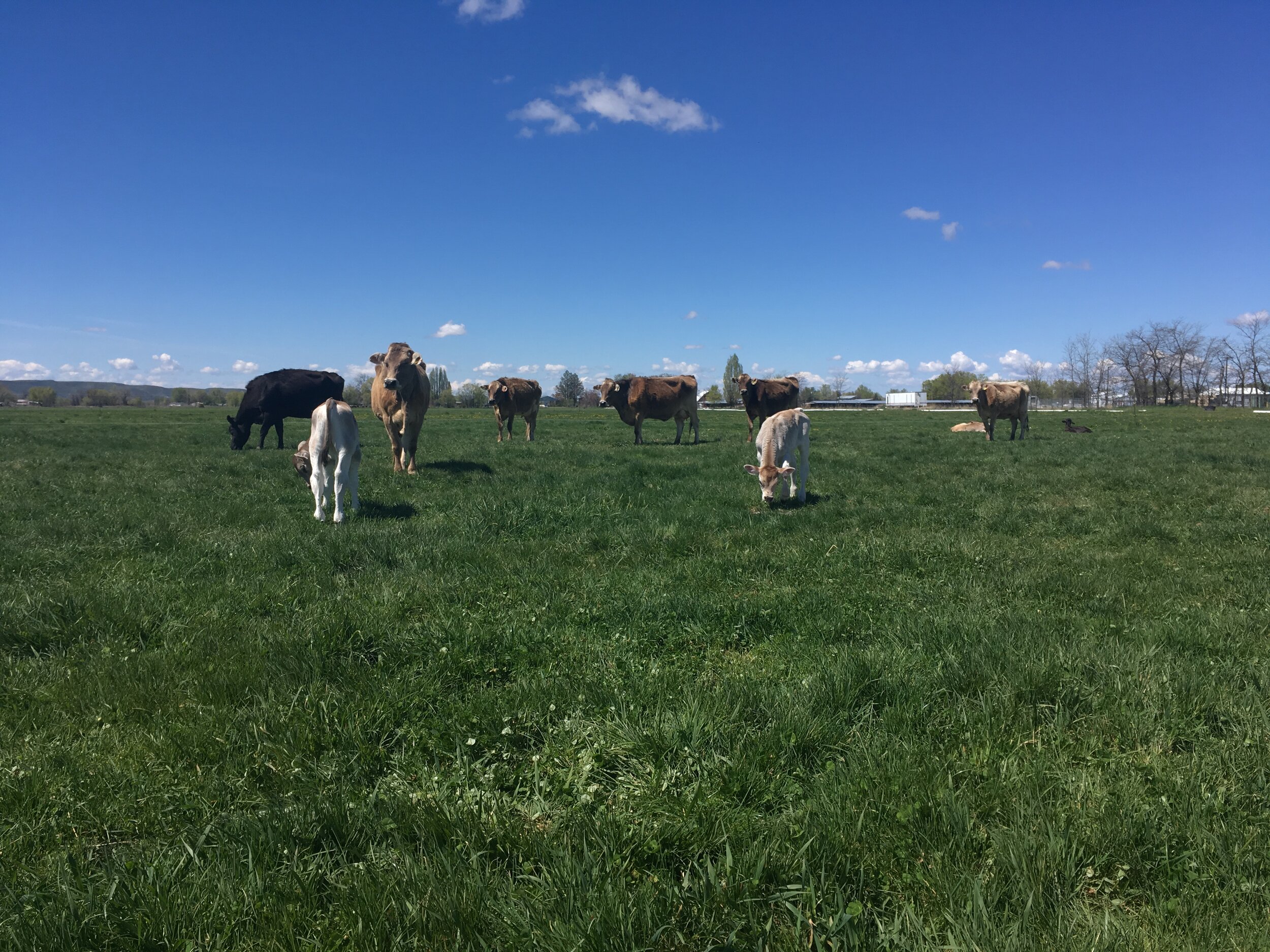Saint John’s cows grazing on organic pasture.
Keto. Paleo. Vegetarian. Carnivore. Plant-Based. Carb cycling. Anti-Inflammatory. GAPS….Ancestral?
All of these are familiar diet labels we frequently hear about. But what really works to have thriving, healthy people?
Many people today find themselves on a journey for better health, and they are wise to start with optimizing their food. There is an overwhelming amount of information, much of it conflicting, about what diet is the healthiest for each person. The truth is complicated, but it’s well within our reach to find what works.
The diseases of modernity are more pervasive than they once were, and are often called “lifestyle diseases”. Most medical professionals are woefully uneducated about how nutrition and lifestyle factors impact health, and there are many people who can improve their conditions and overall health by changing their food, movement, sleep, and sunshine.
There’s an adage that if your great-grandmother didn’t eat it, you shouldn’t recognize it as food either. There is wisdom to be found in eating an ancestral diet, the diet of your pre-industrialized ancestors and the diet your genes expect.
The Weston A. Price Foundation is a pillar of the ancestral nutrition movement, and is dedicated to spreading information about how to use traditional foods and therapies to heal from the diseases of modernity.
Weston A. Price, DDS. Photo copyright Weston A. Price Foundation
Who was Weston A. Price?
Weston A. Price, DDS was a Cleveland dentist who travelled the globe and documented the diets and health of isolated, nonindustrialized peoples untouched by modern foods. As a dentist, he was naturally interested in palette formation and dental health and how traditional foods supported healthy skeletal development.
Astonishingly, he found a variety of tribal peoples were in excellent health with no cavities and no need for orthodontia. He observed their facial structure was beautiful and their elderly lived long and healthful lives.
“The photographs taken by Dr. Weston Price illustrate the difference in facial structure between those on native diets and those whose parents had adopted the “civilized diets of devitalized processed foods. The “primitive” photos on the left show a wide, handsome face with plenty of room for the dental arches. The “modernized” children on the right show children born to parents who had abandoned their traditional diets, have narrow faces, crowded teeth, and reduced immunity to disease.” - Price-Pottenger Nutrition Foundation, photos copyright Price-Pottenger Nutrition Foundation
All About the Weston A. Price Foundation
The Weston A. Price Foundation (WAPF) is a nonprofit charity dedicated to disseminating information about the work of Weston A. Price, specifically information related to food, farming, and the healing arts.
The WAPF is dedicated to “restoring nutrient-dense foods to the American diet through education, research, and activism, and it supports a number of movements that contribute to this objective including accurate nutrition instruction, community-supported farms, organic and biodynamic farming, honest and informative labeling, pasture-feeding of livestock, prepared parenting, and nurturing therapies.”
The WAPF publishes information about the characteristics of traditional diets found by Dr. Price and they make it easy by keeping a trove of recipes and shopping guides.
Why this Matters for Grass Fed Beef
One of the pillars of traditional diets is “eat beef, lamb, game, organ meats, poultry, and eggs from pasture-fed animals.”
For most of human history, we have thrived on grass fed beef (and other meats) because grasses are the species-appropriate diet for cows and other ruminants.
We know that, compared to grain fed beef, grass fed beef is:
10X higher in vitamin A
3X higher in vitamin E
Substantially higher in calcium, magnesium, potassium, & B vitamins
Lower in cholesterol
An abundant source of anti-cancer conjugated linoleic acid
Free of GMOs
Free of synthetic fertilizers
Free of hormones and antibiotics
Free of glyphosate and other pesticides or herbicides
We support the efforts of the Weston A. Price foundation because we know that nature cannot be improved upon, and returning to traditional ways of eating has restored the health of many in our community. We are proud to continue our family legacy of offering quality organic, grass fed, grass finished beef to the Treasure Valley.













